#Twelve Apostles of Ireland
Explore tagged Tumblr posts
Text
#OTD in 587 – St Brendan the Navigator, early transatlantic voyager, dies.
In 484 St. Brendan was born in Ciarraighe Luachra near the port of Tralee, in Co Kerry, in the province of Munster, in the South West of Ireland. He was baptised at Tubrid, near Ardfert, by Saint Erc. He spent his first year with his parents, then he went to the home of the local chieftain, Airde mac Fidaigh at Cathair Airde in Listrim, three miles to the East. He returned to his family at the…
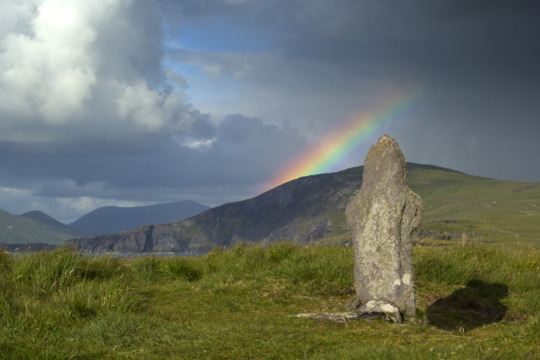
View On WordPress
#Ancient Cross#Ardfert#Co. Kerry#Egressio familiae S. Brendani#Holy Well#Ireland#Mount Brandon#Naval Academy#Navigatio Brendani#Patron Saint of sailors and travellers#St Patrick#St. Brendan the Navigator#Transatlantic Voyager#Twelve Apostles of Ireland#United States Naval Academy#Valentia Island
13 notes
·
View notes
Text
SAINT OF THE DAY (June 9)

On June 9, the Catholic Church commemorates the sixth-century Irish monk and missionary, Saint Columba of Iona, also known as St. Columcille.
One of Ireland's three patron saints (together with Saint Patrick and Saint Brigid), he is also sometimes called the “Apostle of the Picts” for his evangelization of Scotland.
He should not be confused with St. Columbanus (or Columban), a different Irish monk and missionary who lived slightly later and ended up in Italy.
Columba was born during 521, descended from royalty through his father.
He was taught and mentored by the priest who baptized him. He later attended a monastic school founded by Saint Finnian of Moville.
His own life as a monk began at the school where he was also ordained a deacon.
The deacon went on to spend time in a different monastery and school run by another Finnian, Saint Finnian of Clonard.
Columba became a priest during this period, and along with eleven others from this same institution, he would be known as one of the “Twelve Apostles of Ireland.”
Columba also studied with Saint Mobhi of Glasnevin, before a disease epidemic forced him to return to his ancestral homeland of Ulster during 544.
He spent the next 15 years traveling, preaching, and founding monasteries.
In 563, it is not clear why Columba left Ireland. By some accounts, he was simply going to preach the word of God.
Others claim that he had become involved in a battle between warring tribes, before repenting and taking on foreign missionary work as a penance.
On the island of Iona, located on Scotland’s northwest coast, Columba and his group of companions built simple monastic quarters and a church for themselves.
The priest-monk’s first missionary work was in the region of Dalriada, whose Celtic Christian inhabitants were lacking solid religious instruction.
His next effort was to convert the Picts of northern Scotland, a task that would take up most of the rest of his life.
He began by gaining entrance to the castle of King Brude, where the locked gates are said to have miraculously opened when the sign of the Cross was made.
The king welcomed the missionaries, believed the Gospel, and was baptized.
Columba’s evangelization of northern Scotland continued over the next three decades.
He and his companions met with some resistance from the native pagan Druids, but on the whole, they found remarkable success in spreading the Catholic faith and building up a network of churches and monasteries.
The island monastery at Iona remained his home base. It drew pilgrims looking to benefit from the priest-monk’s wisdom and his prayers.
He remained in touch with the Irish Church, making many trips back until he became too weak to travel.
Even in old age, Columba maintained an intense routine of prayer, fasting, and study.
After giving a final blessing to his monastery on 8 June 597, he died sometime in the early hours of the following day.
#Saint of the Day#Saint Columba of Iona#St. Columcille#Apostle of the Picts#Twelve Apostles of Ireland
4 notes
·
View notes
Text
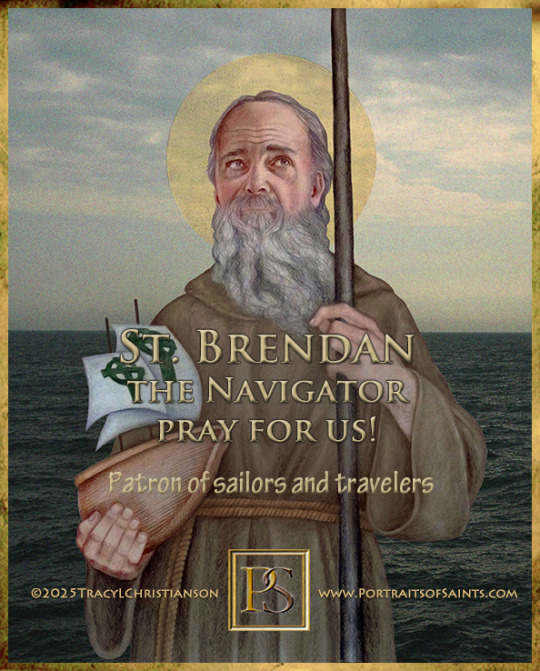
Saint Brendan the Navigator
484 - 577
Feast Day: May 16th
Patronage: boatmen, sailors, travelers, whales
St. Brendan the Navigator, an Irish saint, lived from 484 to 577. He was one of the Twelve Apostles of Ireland. He is most known for his legendary travels, especially to the “Isle of the Blessed”, also known as Saint Brendan’s Island. He is said to have encountered a sea monster and to have celebrated Easter Mass on the back of a giant whale!
Prints, plaques & holy cards available for purchase. (website)
42 notes
·
View notes
Text
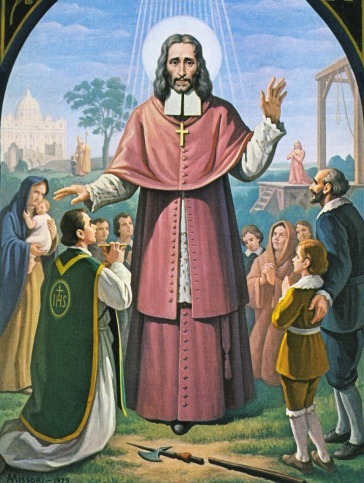
Saint of the day July 01
STS. JULES AND AARON, MARTYRS OF BRITANNIA, JULY 1 https://en.wikipedia.org/wiki/Julius_and_Aaron Sts. Julius and Anron, 305 A.D. Martyrs of Britain, put to death at Caerlon, Monmouthshire, with companions. St. Bede listed them in his martyrology.
Saint Oliver Plunkett (1 November 1629 – 1 July 1681) was the Roman Catholic Archbishop of Armagh and Primate of All Ireland, hanged, drawn and quartered at Tyburn, July 1 English Martyrs: Archbishop Oliver Plunket - The Fruits of the Spirit (1 July) https://youtu.be/1RKlaV0p4T8
St. Veep, 6th century. Patron saint of St. Veep, in Cornwall, England, also called Veepu and Wennapa. Veep was possibly a member of the celebrated clan of Brychan.
St. Servan, 6th century. Patron of the Orkney Islands. Bishop, also known as Servanus, Serf, or Sair. According to an unreliable legend, he was from Ireland, receiving consecration as bishop from St. Palladius and preaching among the Scots. He is honored as the patron of the Orkney Islands, although it is highly unlikely that he was ever there. He is called the Apostle of West Fife.
St. Juthware, 7th century. Virgin and possible martyr of England, the sister of St. Sidwell. Many legends are connected to her life, including one in which she was beheaded.
St. Cewydd, 6th century. A Welsh saint of Anglesey, Wales. Nothing else is known of him.
St. Gall, 450-645 A.D. Famous Irish missionary and companion of St. Columban. Born in Ireland, he was trained by Sts. Columban and Comgall, and he was one of the twelve companions who accompanied Columban to France. He was a noted scriptural scholar and helped in the founding of Luxeuil Monastery. When St. Columban was exiled in 610, Gall followed him to Switzerland and then to Italy. Gall remained in Switzerland and became a hermit on the Steinach River. The monastery of St. Gall was erected on this site. Gall refused two bishoprics and abbacy of Luxeuil. He is venerated as an apostle to the land. He died in Arbon.
Bl. Junipero Serra, Spanish Franciscan friar who founded the first nine of 21 Spanish missions in California from San Diego to San Francisco, At the age of thirty-seven, he landed in Mexico City on January 1, 1750, and spent the rest of his life working for the conversion of the peoples of the New World. Feastday July 1
ST. AARON, MOSE'S BROTHER, HIGH PRIEST OF THE OLD TESTAMENT Aaron, the brother of Moses, was the first High Priest of Israel. When Moses was on Mt Sinai, Aaron gave in to the people’s desire to have an idol. He repented and was pardoned by God, but on account of later doubts, he was, like his brother forbidden from entering the Promised Land. July 1
0 notes
Text
The 15 Most Beautiful Sea Stacks in the World to See
Discover the most 15 most beautiful sea stacks in the world in my exclusive guide. Learn about their captivating beauty and where to find them around the globe.
Rising majestically from the ocean, sea stacks have captivated the imagination of travelers for centuries. Given names like the “Twelve Apostles” and the “Old Man of Hoy”, these breathtaking geological marvels often tell a story of erosion and resilience. From the rugged cliffs of Ireland to the serene beaches of Australia, these most beautiful sea stacks in the world captivate the imagination…
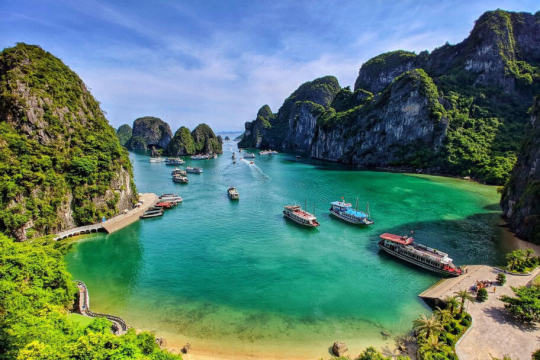
View On WordPress
#sea cliff photos#sea stack ballycastle#sea stacks and cliffs#sea stacks and sea arches#sea stacks around the world#sea stacks australia#sea stacks canada#sea stacks faroe islands#sea stacks in the world#sea stacks ireland#sea stacks locations#sea stacks new brunswick#sea stacks nova scotia#sea stacks picture#sea stacks scotland#sea stacks thailand#sea stacks vietnam#tallest sea stack
0 notes
Text
Ireland’s Historic Treasures: Castles, Cathedrals, and Celtic Sites
Ireland is a country, which is full of history, and is waiting for tourists with ancient castles and cathedrals, mysterious Celtic legends. Regardless of whether you are an architecture freak, a history buff, or an adventurer looking for something off the beaten track, Ireland’s history will amaze you. Ireland offers an extraordinary opportunity to dive into the Middle Ages: beautiful castles rising on the hills, somber cathedrals, and sacred Celticís sites.
If you are interested in visiting the most popular Irish sights, an Ireland tour packageis the best opportunity to start this exciting trip. For visitors who are arriving from India, an Ireland tour package from India is a well-planned vacation where you would get to taste the best of Ireland’s history and scenic beauty without any hassle. Prepare yourself to become a part of Ireland’s history and learn what tales are still happening in the country’s stone.
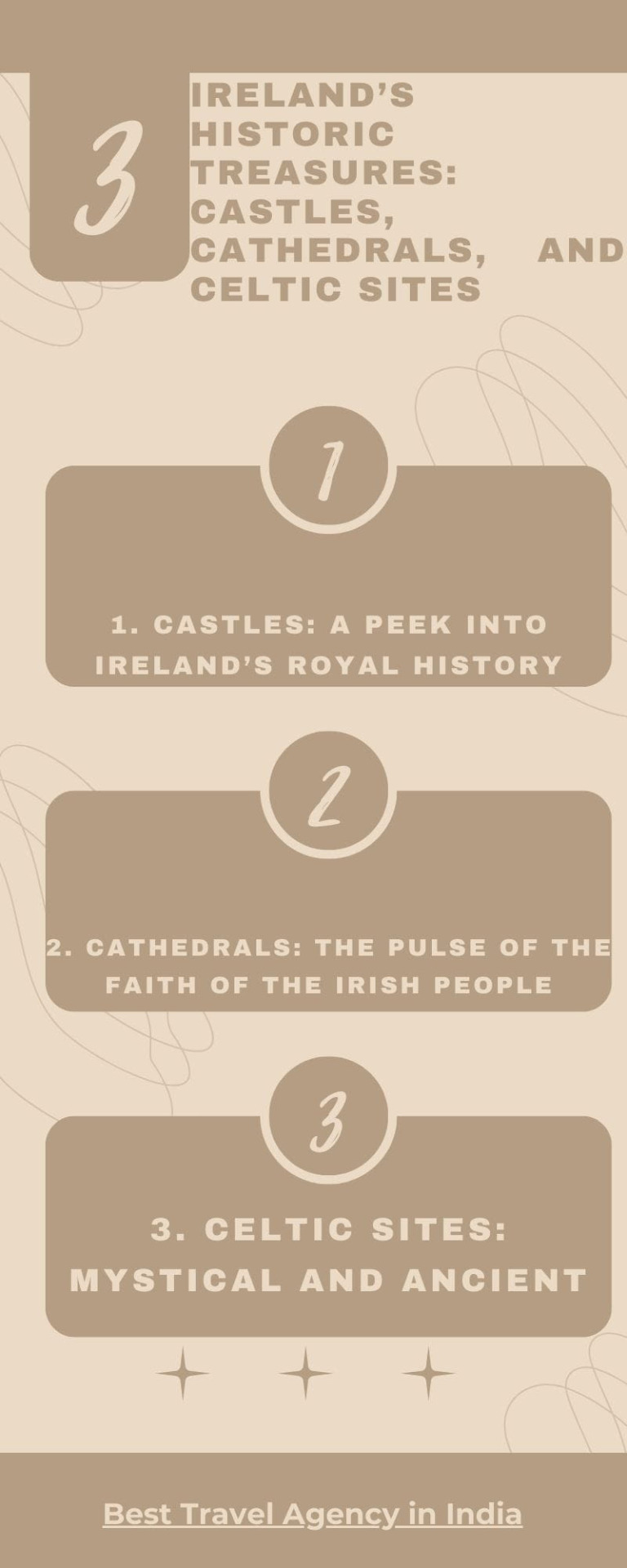
1. Castles: A Peek into Ireland’s Royal History
Ireland has many great castles and a good number of them are as old as they are beautiful. These grand buildings were earlier residences of kings, queens, and the elite early influential families in the formation of the country. No matter if you wandering through the corridors of the historical castle in Blarney, or if you are impressed by the height of the Dublin Castle walls, you are experiencing something from the past.
Blarney Castle is in County Cork, most associated with the Blarney Stone which is popular to make people good speakers if kissed. The other place that one should not miss is Kilkenny Castle, a twelve century tower house with well-maintained gardens.
For those who want something more personal, it would be wise to avail an Ireland tour package since it would then be easy to visit several castles and other important historical sites. It is so much more exciting to be driving through the countryside with a guide who can tell you about these castles.
Check out: South Africa Tour Package | South korea Tour Package | Morocco Tour Package | Ireland Tour Package | Mauritius tour package |Leh and Ladak Tour Package | Jordan Tour package | Oman Tour package | Lakshadweep Tour package
2. Cathedrals: The pulse of the faith of the Irish people
Ireland has some of the beautiful cathedrals in Europe. Apart from being religious structures, these architectural marvels are representations of Ireland’s religious past. St. Dublin’s St. Patrick’s Cathedral, which is devoted to Ireland’s apostle, is one of the most famous sights of the country. Thanks to its towers and Gothic appearance inside, it is possible to get an idea of the religious and cultural role of Christianity in Ireland.
Another rather beautiful church is that of Christ Church Cathedral in Dublin featuring Norman architecture and a beautiful stained glass work. Seeing these cathedrals is an invitation to meditate about Ireland’s past and especially the place that religion has taken in the construction of the country.
Check out: Thailand visa | Dubai visa | Oman visa | Saudi Arabia visa
Bahrain visa | Qatar visa | Kuwait visa | Kazakhstan visa | Argentina visa
Brazil visa | Austria visa
3. Celtic Sites: Mystical and Ancient
Irish history is based on Celtic tradition, and there are numerous Celtic monuments in Ireland that make you more acquainted with the Celtic period. That is why one of the best known Celtic locations in Ireland is the Hill of Tara in County Meath that served as the location of the High Kings of Ireland. Visiting this historical hill provides a good opportunity to get acquainted with the Irish history and have a great view of the country’s countryside.
If antiquity and especially prehistoric monuments are the attractions of choice, Newgrange in County Meath must be visited. This tomb is older even than the Pyramids of Egypt and the stone structure itself is aligned with the winter solstice, proving the Celts’ amazing understanding of astronomy.
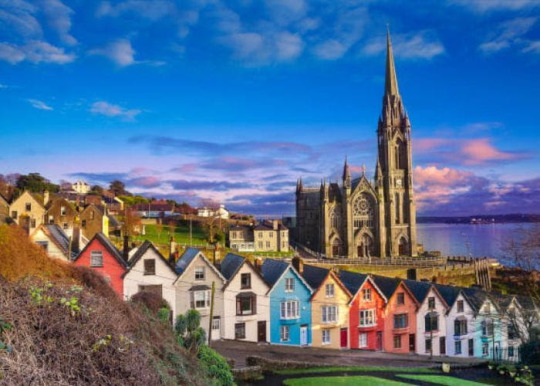
Conclusion:
The history of Ireland, its castles and cathedrals, and Celtic legends are the best chance to plunge into the history of the country and see beautiful landscapes. From the great halls of a castle to the ornate carvings of a cathedral it is impossible to escape the history of Ireland. These historical structures are not only educative inasmuch as they give one a feel of the ancient world, but also spiritual in the sense that they give one a feel of the spirit of this wonderful nation.
Read more: UK Tour Package | Japan Tour Package | Andaman Tour Package | Portugal Tour Package | Russia Tour Package | Seychelles Tour Package | Australia Tour Package
These are some of the historical sites that you will get to see and if you are interested in visiting them an Ireland tour package is the best way to go. For those visiting Ireland from India, getting an Ireland tour package from India means that everything is arranged so that the traveler can easily immerse themselves in the gorgeous and rich history of Ireland. Well, so buckle up and let the tales of Ireland’s history unravel themselves in front of you!
0 notes
Text
The Best Beaches in South Africa for Relaxation and Adventure
South Africa is one of the best places to go for beach lovers as it provides some of the best scenery of beaches in the world. There is a wide range of beaches in the country and thus, tourists who are interested in relaxing on a quiet sandy shore, as well as those who want to have some extreme sport, can get it in the country. It’s coastline ranges from white sandy beaches ideal for vacations to the more active adventurous beaches suitable for surfers. Here, no matter the kind of vacation you’re planning, whether it’s a lazy one or an adventurous one, the beaches will offer the best.
For those who are planning to visit this beautiful place, the South Africa Tour Package from India is the best way to enjoying the beautiful sandy shores of this country. For tourists coming from India, there are wonderful South Africa tour package from India that give a traveler an opportunity to get an experience of the beaches of South Africa where you can either have fun or get adventurous. Well, grab your sunblock and sense of wanderlust because these beaches are just begging for a visit in South Africa!

Here are the Best Beaches in South Africa for Relaxation and Adventure
1. Camps Bay Beach – Cape Town
Camps Bay Beach is a place that you should not miss when you want to spend your time at the beach. It is situated close to the Twelve Apostles mountain range and within the driving distance from the city, it has a good view and atmosphere. For sun bathing, swimming, beach volley, this beach has a colorful nightlife surrounding it. If you are planning a holiday in which you will be mostly on the beach with just a touch of the urban life, then this is the beach to go to.
Adventure tip: There is a paragliding from Signal Hill where you get to see the beach and the whole of Cape Town city.
Check out: South Africa Tour Package | South korea Tour Package | Morocco Tour Package | Ireland Tour Package | Mauritius tour package
2. Boulders Beach – Simon’s Town
The colony of penguins in Boulders Beach makes it one of the most beautiful beaches in South Africa. The beach is surrounded by large granite rocks, which essentially make the beach very private and serene. It is perfect for swimming, sunbathing and taking pictures of the lovely penguins who are inhabitants of this area.
Relaxation tip: Take a break and lie down on the warm sand and watch the penguins walking around.
3. Muizenberg Beach – Cape Town
It is one of the most famous beaches for families in South Africa and boasts colorful beach cabins. The waves are ideal for first-timers, and there’s no better place for families and couples to vacation.
Adventure tip: If you are a beginner you are welcome here and you can get a lesson on how to surf. It has a steady swell and the instructors are very accommodating it makes a perfect place to learn how to surf.
Check out: Thailand visa | Dubai visa | Oman visa | Saudi Arabia visa
Bahrain visa | Qatar visa | Kuwait visa | Kazakhstan visa | Argentina visa
Brazil visa | Austria visa
4. Jeffreys Bay – Eastern Cape
If you are an adventurer, Jeffreys Bay is among the best places for surfing in the entire South Africa. This beach is famous for a perfect right hand point break and numerous surfers come here from all parts of the globe. Of course, if you are not a surfer the long sandy beaches are perfect for walking, moreover, the town nearby has enough shops and restaurants.
Adventure tip: Do not leave without being able to surf in some of the best spots in the world, or if you are not so adventurous, take a kiteboarding lesson.
5. Victoria Bay – Garden Route
Victoria Bay is another beach that is located in the Garden Route and like the other beaches mentioned above it is a great place to go for a sun tan without the crowds. This is a small bay that has cliffs and lots of vegetation around and this makes it the best place to avoid many people. The water is warm and the waves are not very powerful so it is a perfect spot for swimming or just relaxing at the shore.
Relaxation tip: Have a barbecue and take a day off and sit in the sun, read a book, watch the water till the horizon.
Read more: UK Tour Package | Japan Tour Package | Andaman Tour Package | Portugal Tour Package | Russia Tour Package | Seychelles Tour Package | Australia Tour Package
6. KwaZulu-Natal Beaches
The province of KwaZulu-Natal boast some of the finest beaches in South Africa where people can sun bath and pamper themselves in water exercises. Due to the tropical climate, the Indian Ocean surrounding the Durban city’s golden beach is perfect for surfing, body-boarding and kite surfing at any time of the year. There are also other small beaches for instance the Umhlanga Rocks beach that are not congested by people.
Adventure tip: For the daring, you can swim with the fish in the coral reefs along the coast or hire a boat to take you to see the dolphins.
7. Paternoster Beach – West Coast
Paternoster beach is a beautiful and quite beach that draws tourists through its sandy shores and clear waters. It is recommended to visit this beach because you can just lie down on the sand, take a walk and enjoy the fresh air. It is also an ideal place for shell finding and the study of natural beauty.
Relaxation tip: If you want to have a quite holiday, rent a small cottage near the sea for a couple of days if you are a couple.
8. Cape Vidal – iSimangaliso Wetland Park
As an added bonus, one can get to enjoy the sun, sand and sea of Cape Vidal and at the same time get a fix of wildlife. Located in the iSimangaliso Wetland Park which is a World Heritage site, it has the white sand and clear water, nice snorkelling and the possibility to see hippos and crocodiles in the adjacent estuaries.
Adventure tip: There are boat safaris in the nearby estuaries or nature walks in the game reserves.
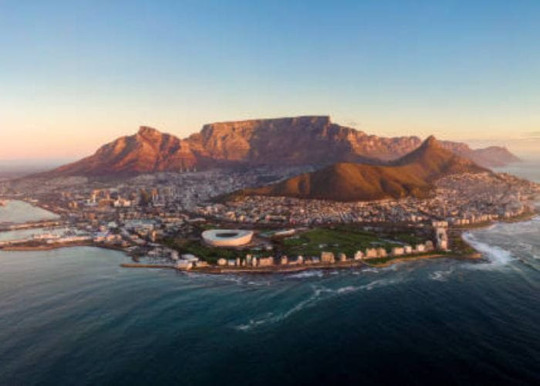
Conclusion:
In conclusion, the beaches of South Africa are the best to visit for those who are looking for a solitary coast or an exciting one as they will get it in South Africa. Whether you are sun tanning at Camps Bay, watching penguins at Boulders Beach or surfing at Jeffreys Bay there are so many beautiful places to visit. Each beach is different, so you will not only have a good time but will also have a lot to remember if you desire to rest or get some adventures.
In order to enjoy the most attractive coastal areas, it is advised to plan your South Africa tour in order to have a glimpse of these beaches. Therefore, for the traveler from India, South Africa tour package from India are the only opportunity to have a perfect rest on the African coast and sea, as well as different types of extreme tourism. The sea is calling South Africa – is the country going to answer that call?
0 notes
Text
Today's Name: ANDREW (IPA: /ˈændruː/)
Usage: English, masculine (very rarely as feminine)
Etymology: English form of Ἀνδρέας (Andreas), derived from ἀνδρεῖος (andreios, meaning "manly, masculine") and ultimately ἀνήρ (aner, meaning "man").
Popularity: Near ubiquitous across European and European-influenced cultures since the medieval period, including a brief spat in the 1980s where it entered the top 1000 most popular girls' names in the USA. Has never been out of the top 1000 in the USA or England and Wales or the top 100 in Canada, but is on the decline (possibly because of the recent infamy of notably terrible people such as Andrew Tate and Prince Andrew, or maybe just because it feels a little old fashioned). It's recently dropped from the top 100 list in Australia, hasn't been in the top 1000 in France for two years, and hasn't been in Aotearoa New Zealand's top 100 since 2013.
Variants: Too many to list entirely, but a shortlist includes nicknames-turned-full-names Andy and Drew (Drew has also become a feminine name in its own right), original Greek form Andreas, European relatives André (France, Portugal, German, Dutch), Andrei/Andrey (Russian and several other related languages), and Anders (Scandinavian). There's also Andrea, largely masculine countries like Italy and Belgium and gender-neutral in France and Switzerland, but considered a feminine name elsewhere.
Famous Namesakes: So many there's a whole Wikipedia page of people named Andrew, but a few notable ones below.
Several saints, most famously Andrew the Apostle, one of Jesus' twelve disciples.
Three medieval kings of Hungary
Two American presidents, Jackson and Johnson, both notably awful people even by the standards of the day (USA)
Andrew Lloyd Webber, composer (England)
Andy Murray, tennis player (Scotland)
Andrew Scott, actor (Ireland)
Andy Warhol, artist (USA)
0 notes
Text
Saint of the Day – 12 December – Saint Columba of Terryglass (Died 552) Abbot, One of the Twelve Apostles of Ireland
Saint of the Day – 12 December – Saint Columba of Terryglass (Died 552) Abbot, Founder of Monasteries, Miracle-worker. One of the Twelve Apostles of Ireland, pupil and disciple of St Finnian of Clonard (470–549) known as the “Tutor of the Saints of Ireland.” Born in Leinster, Ireland and died on 13 December 552 of the Plague at his Monastery in Terryglass, where he was also buried. Also known as…
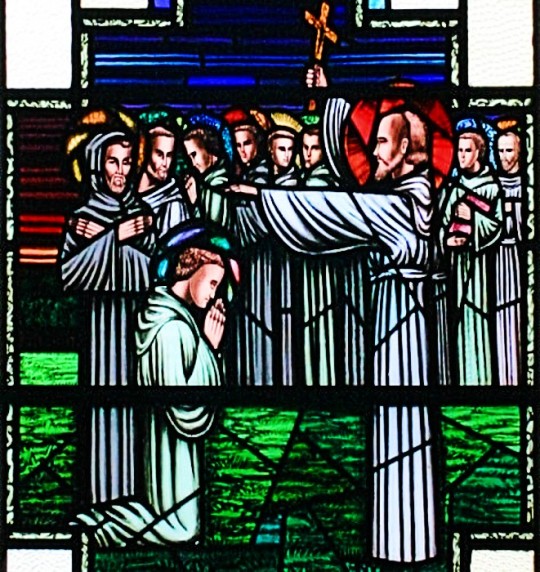
View On WordPress
1 note
·
View note
Text
"The Spread of Christianity in the British Isles: Monastic Missions and Roman Authority Triumphs"
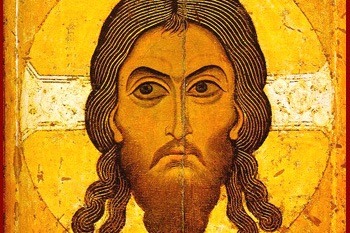
The spread of Arianism among Germanic tribes and the conversion of the Franks to Roman faith were noted. Catholic orthodoxy was gradually accepted by Germanic invaders. However, there was still much to do. The church's vitality during the collapsing empire and opening Middle Ages was shown through its successful extension of Christianity.
Ireland and Scotland
Christianity was present in British Isles before Constantine's conversion. The Roman Empire's downfall weakened it among the Celtic population, while the Anglo-Saxon invaders won much of southern and eastern England for heathenism. Christian beginnings were found mainly in southern Ireland before Patrick. However, he greatly advanced the cause of the Gospel in Ireland and organized its Christian institutions, earning the title of Apostle of Ireland.
Patrick was born in 389 and was the son of a deacon and grandson of a priest. He was trained in Christianity. In 405, he was taken as a slave in Ireland for six years. He was able to escape to the Continent and lived in the monastery of Lérins for some time. In 432, he was ordained a missionary bishop by Bishop Germanus of Auxerre. Patrick then began his work in Ireland, where he spent most of his time in the northeast, with some efforts in the south and west. Despite few facts surviving, there is no doubt about his zeal and his abilities as an organizer. He systematized and advanced Christianity in Ireland. Patrick brought the island into association with the Continent and with Rome.
Patrick introduced the diocesan episcopate into Ireland, but it was soon modified by the island's clan system, resulting in many monastic and tribal bishops. Finian of Clonard (470?-548) developed the unique Irish monasticism, which included strong missionary efforts and notably learned monasteries. The Irish monastic schools were famous in the sixth and seventh centuries, and the monasticism's greatest achievement was its missionary work.
The origins of Christianity in Scotland are unclear. Ninian and Kentigern spread the religion in the 4th and 5th centuries respectively, but not much is known about their work. There is a possibility that the Irish settlers who founded the kingdom of Dalriada in 490 were Christians. However, the most influential missionary was Columba. He founded a successful monastery on the island of Iona and went on to spread the Gospel among the Picts in the northern regions of Scotland. Christianity in Scotland was mainly monastic, with bishops under the authority of Columba and his successors as abbots of Iona.
Missionaries on the Continent
Irish missionaries brought Christianity to northern England, Lindisfarne. Aidan, a monk from lona, established a new Iona on the island in 634. Christianity was then widely spread in the region by Aidan and his associates. These Celtic monks were also active outside of the British Islands. Columbanus, a monk from the Irish monastery of Bangor, founded the monastery of Luxeuil in Burgundy. He later established the monastery of Bobbio in northern Italy, where he died a year later.
Columbanus was one of many Irish monks who worked in central and southern Germany. They introduced private confession to the laity, which was widely supported by the Irish monks. The Irish also created the first penitential books with appropriate satisfactions for specific sins. These books were made familiar on the Continent by the Irish monks.
Roman Missionaries in England
Pope Gregory the Great sent Augustine, a Roman friend, and several monastic companions to convert the Anglo-Saxons. After much struggle, Æthelberht and many of his followers accepted Christianity. Augustine was then appointed as a metropolitan bishop and was authorized to establish twelve bishops under his jurisdiction. It took almost a century for Christianity to become dominant in England, but the movement strengthened the papacy and produced some of the most energetic missionaries on the Continent.
The acceptance of Christianity in England was not without difficulty. After the death of Ethelberht, the power of Kent declined, and with it the initial Christian successes. Northumbria gradually emerged as the leader. In 627, King Edwin of Northumbria was converted to Christianity through the efforts of Paulinus, who later became bishop of York. However, in 633, the heathen King Penda of Mercia defeated and killed Edwin, leading to a heathen backlash in Northumbria.
Under the Christian King Oswald, who had converted while in exile in Iona, Christianity was re-established in Northumbria with the help of Aidan, who represented the Irish or "Old British" tradition (see ante, p. 197). Penda attacked again, and in 642, Oswald was killed in battle. His brother, Oswy, like him a convert of Iona, struggled to secure all of Northumbria, finally succeeding by 651 and earning widespread recognition as an overlord. English Christianity was becoming firmly established.
Roman Authority Triumphs
Since the arrival of the Roman missionaries, there had been disputes between them and their Irish or Old British counterparts. The differences seemed minor, such as the older system of reckoning used by the Irish and Old British, which resulted in diversity regarding the date of Easter. Additionally, the forms of tonsure and the administration of baptism differed. The Old British Church was monastic and tribal while Roman Christianity was diocesan and organized. The Old British missionaries considered the Pope as the highest dignitary in Christendom, but the Roman representatives held him to have judicial authority which the Old British did not fully accept. Southern Ireland accepted the Roman authority around 630, while England made its decision at a synod in Whitby in 664 under King Oswy. Bishop Colman of Lindisfarne defended the Old British usages, while Wilfrid, previously of Lindisfarne but having won for Rome on a pilgrimage and soon to be bishop of York, opposed. The Roman custom regarding Easter was approved, securing the Roman cause in England. By 703, Northern Ireland had followed the same path, and by 718, Scotland. In Wales, the process of accommodation was much slower and only completed in the twelfth century. Pope Vitalian's appointment of a Roman monk, Theodore, as Archbishop of Canterbury in 668 further strengthened the Roman connection in England. Theodore, an organizer of ability, did much to make permanent the work begun by his predecessors.
The combination of the two streams of missionary effort proved advantageous for English Christianity. While Rome contributed order, the Old British added missionary zeal and a love of learning. The scholarship of Irish monasteries was transplanted to England and strengthened by frequent Anglo-Saxon pilgrimages to Rome. Bede, also known as the "Venerable" (672?-735), was a prominent figure in this intellectual movement. He spent most of his life as a member of the joint monastery of Wearmouth and Jarrow in Northumbria. Like Isidore of Seville a century earlier, Bede's learning encompassed the full range of knowledge of his time, making him a teacher for generations to come. He wrote on chronology, natural phenomena, the Scriptures, and theology. He is most famously known for his "Ecclesiastical History of the English Nation," a highly regarded work that is the principal source of information regarding the Christianization of the British Islands.
Annotated Bibliography
- *The Conversion of the Anglo-Saxon Kingdoms* by Richard Fletcher: This book provides a comprehensive overview of the spread of Christianity in England, including the role of Roman and Celtic missionaries and the conflicts that arose between them.
- *Celtic Christianity: Making Myths and Chasing Dreams* by Ian Bradley: This book explores the origins and development of Celtic Christianity, including its unique monastic traditions and how it influenced the spread of Christianity in the British Isles.
- *Saint Patrick's World: The Christian Culture of Ireland's Apostolic Age* by Liam de Paor: This book provides a detailed account of the life and work of Saint Patrick, including his mission to Ireland and his efforts to establish Christianity on the island.
- *Bede: The Ecclesiastical History of the English People* translated by Leo Sherley-Price: This classic work by the Venerable Bede is a primary source for the history of Christianity in England, providing valuable insight into the early church and its leaders.
- *The Life of Saint Columba* by Adomnan of Iona: This biography of Saint Columba, written by one of his contemporaries, provides a detailed account of his life and work as a missionary in Scotland and his establishment of the monastery at Iona.
1 note
·
View note
Photo
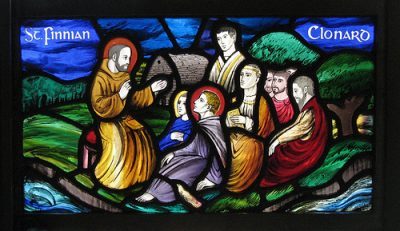
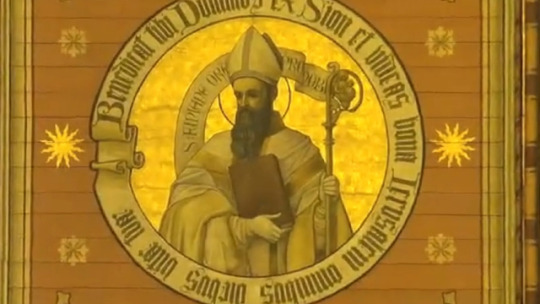



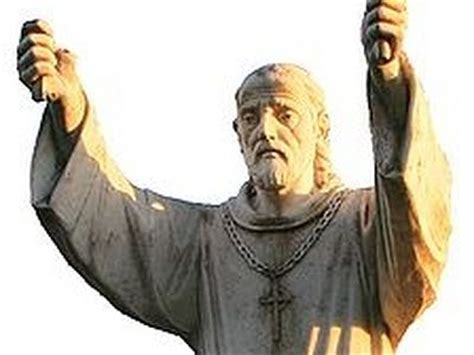
Saint Finnian of Clonard ('Cluain Eraird') – also Finian, Fionán or Fionnán in Irish; or Vennianus and Vinniaus in its Latinised form (470–549) – was one of the early Irish monastic saints, who founded Clonard Abbey in modern-day County Meath. The Twelve Apostles of Ireland studied under him. Saint Finnian of Clonard (along with Saint Enda of Aran) is considered one of the fathers of Irish monasticism.[
#saint#catholic#ireland#st finnian#st finnian of clonard#eire#twelve apostles of ireland#clonard abbey#county meath
7 notes
·
View notes
Text
#OTD in Irish History | 5 April:
456 – St Patrick returns to Ireland as a missionary bishop. 584 – Death of St Ruadhan (Ruadán), one of the twelve ‘Apostles of Erin’. He died at the monastery of Lorrha, Co Tipperary. 1605 – Death of Adam Loftus. He was Archbishop of Armagh, and later Dublin, and Lord Chancellor of Ireland from 1581. He was also the first provost of Trinity College, Dublin. 1806 – William Dool Killen,…
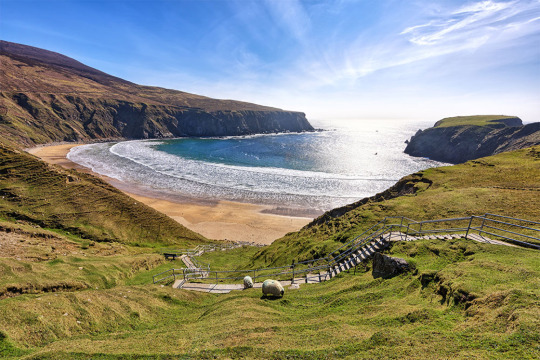
View On WordPress
#irelandinspires#irishhistory#OTD#wildatlanticway#5 April#An Trá Bhán#Co. Donegal#Gareth Wray Photography#garethwray.com#Guinness#Harp#History#History of Ireland#Ireland#Irish Civil War#Irish History#Irish War of Independence#Malin Beg#Silver Strand#Today in Irish History
9 notes
·
View notes
Text
SAINT OF THE DAY (June 9)
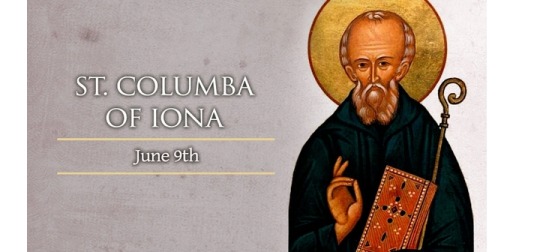
On June 9, the Catholic Church commemorates the sixth-century Irish monk and missionary Saint Columba of Iona, also known as St. Columcille.
One of Ireland's three patron saints (together with Saint Patrick and Saint Brigid), he is also sometimes called the “Apostle of the Picts” for his evangelization of Scotland.
He should not be confused with St. Columbanus (or Columban), a different Irish monk and missionary who lived slightly later and ended up in Italy.
Columba was born during 521, descended from royalty through his father.
He was taught and mentored by the priest who baptized him and later attended a monastic school founded by Saint Finnian of Moville.
His own life as a monk began at the school, where he was also ordained a deacon.
The deacon went on to spend time in a different monastery and school run by another Finnian, Saint Finnian of Clonard.
Columba became a priest during this period, and along with eleven others from this same institution, he would become known as one of the “Twelve Apostles of Ireland.”
Columba also studied with Saint Mobhi of Glasnevin, before a disease epidemic forced him to return to his ancestral homeland of Ulster during 544.
He spent the next 15 years traveling, preaching, and founding monasteries.
In 563, it is not clear why Columba left Ireland. By some accounts, he was simply going to preach the word of God.
Others claim that he had become involved in a battle between warring tribes, before repenting and taking on foreign missionary work as a penance.
On the island of Iona, located on Scotland’s northwest coast, Columba and his group of companions built simple monastic quarters and a church for themselves.
The priest-monk’s first missionary work was in the region of Dalriada, whose Celtic Christian inhabitants were lacking solid religious instruction.
His next effort was to convert the Picts of northern Scotland, a task that would take up most of the rest of his life.
He began by gaining entrance to the castle of King Brude, where the locked gates are said to have miraculously opened when the sign of the Cross was made.
The king welcomed the missionaries, believed the Gospel, and was baptized.
Columba’s evangelization of northern Scotland continued over the next three decades.
He and his companions met with some resistance from the native pagan Druids, but on the whole, they found remarkable success in spreading the Catholic faith and building up a network of churches and monasteries.
The island monastery at Iona remained his home base, and it drew pilgrims looking to benefit from the priest-monk’s wisdom and his prayers.
He remained in touch with the Irish Church, making many trips back until he became too weak to travel.
Even in old age, Columba maintained an intense routine of prayer, fasting, and study.
After giving a final blessing to his monastery on 8 June 597, he died sometime in the early hours of the following day.
1 note
·
View note
Text
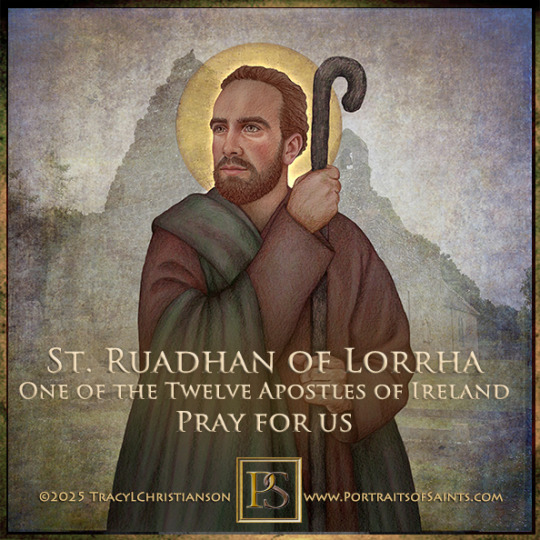
Saint Ruadhan of Lorrha
Died: 584
Feast Day: April 15
Patron saint of Lorrha
Saint Ruadhan of Lorrha (also known as Rowan, Rodon, Rodan), an Irish Christian, was born of the royal family of Fergus mac Echdach. He was educated by St. Finnian at the Clonard Monastery. He established a monastery at Lorrha in which he was also the abbot. He’s known for his prophecies and is one of the Twelve Apostles of Ireland. In 584 he died peacefully in his sleep.
Prints, plaques & holy cards available for purchase. (website)
21 notes
·
View notes
Text
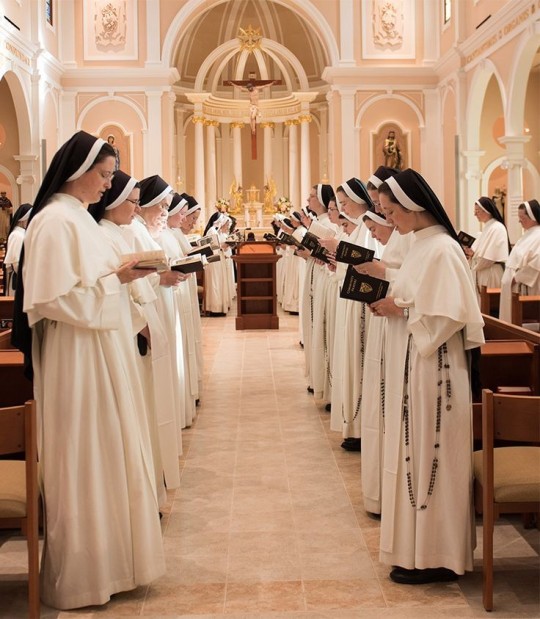
SAINTS OF THE DAY FOR APRIL15
St. Hunna Called “the Holy Washerwoman,” a noblewoman who devoted herself to the poor of Strasbourg, France. The daughter of a duke and wife of Huno of Hunnaweyer, she even washed the poor, hence her name.
St. Paternus. The first 5th century saint. He followed his father's path by becoming a hermit in Wales. He founded the monastery at the great church of Paternus, and became a bishop of that region. He was known for his preaching, charity and mortifications. Scholars believe his story is an amalgam.
St. Ruadan, 584 A.D. One of the Twelve Apostles of Ireland, an abbot founder. He was born in Leinster, Ireland, and was a disciple of St. Finian of Clonard. Ruadan was the founder of the monastery of Lothra, in Tipperary, which had 150 monks.
St. Mundus, 962 A.D. Scottish abbot sometimes called Mund, Munde, or Mond. He founded abbeys in Argyle, Scotland.
ST. ABBONDIO
0 notes
Photo
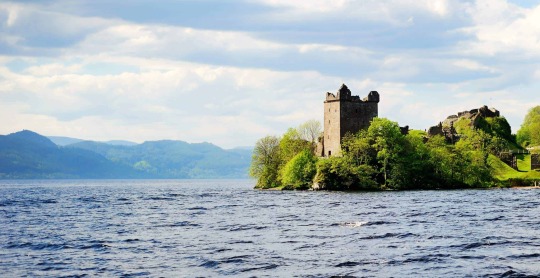
On this day, August 22, 565 St Columba reports seeing monster in Loch Ness. The first recorded sighting of the Loch Ness Monster.
Columba or Colmcille (7 December 521 – 9 June 597 AD) was an Irish abbot and missionary evangelist credited with spreading Christianity in what is today Scotland at the start of the Hiberno-Scottish mission. He founded the important abbey on Iona, which became a dominant religious and political institution in the region for centuries. He is the patron saint of Derry. He was highly regarded by both the Gaels of Dál Riata and the Picts, and is remembered today as a Catholic saint and one of the Twelve Apostles of Ireland. Columba studied under some of Ireland's most prominent church figures and founded several monasteries in the country. Around 563 AD he and his twelve companions crossed to Dunaverty near Southend, Argyll, in Kintyre before settling in Iona in Scotland, then part of the Ulster kingdom of Dál Riata, where they founded a new abbey as a base for spreading Celtic Christianity among the pagan Northern Pictish kingdoms. He remained active in Irish politics, though he spent most of the remainder of his life in Scotland. Three surviving early medieval Latin hymns may be attributed to him.
As for the “monster”, in the 1960s several British universities launched sonar expeditions to the lake. Nothing conclusive was found, but in each expedition the sonar operators detected some type of large, moving underwater objects. In 1975, another expedition combined sonar and underwater photography in Loch Ness. A photo resulted that, after enhancement, appeared to show what vaguely resembled the giant flipper of an aquatic animal.Further sonar expeditions in the 1980s and 1990s resulted in more inconclusive readings.
62 notes
·
View notes